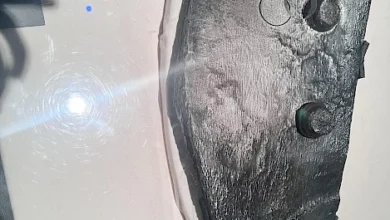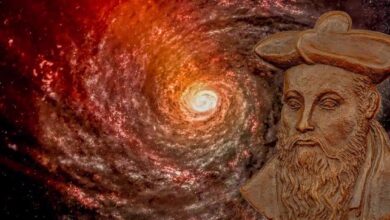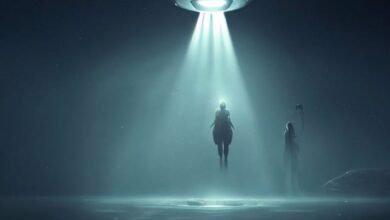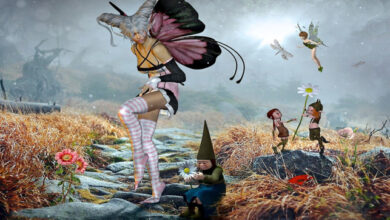Strange Cases of Obscure Mysterious Little People From Around the World

A commonly occurring phenomenon seen in the folklore and myth of a wide range of cultures throughout the world is the existence of miniature humanoid creatures. Faeries, dwarves, gnomes, leprechauns, or by whatever other names they are known, mysterious little people of various types have consistently emerged as important elements of folklore across the globe and throughout disparate cultures since time unremembered. Although many might think of these creatures as being unique to Europe, this couldn’t be further from the truth, and here we will look at some more obscure stories of these creatures lurking throughout the world.
Among the many legends of the proud Cherokee people of North America is the curious tale of a race of little people who were said to inhabit the wilds of North Carolina, Tennessee and Georgia, and who the Natives called the Nunne’hi, meaning “people who live anywhere,” as well as the Yûñwï Tsunsdi’, or “Little People.” In appearance they were said to look just like human beings, only smaller in stature, in some traditions no higher than a man’s knee, and imbued with various powers such as the ability to vanish at will, teleport from place to place, and the ability to live forever. The Nunne’hi were mostly considered to be a jovial race, inclined to dance and sing, and they were also seen as benevolent protectors of the forest and helpers of lost travelers. It was not uncommon for hunters to tell of hearing the drums of Nunne’hi off in the distance, although it was said that to try and track the sound to its source was futile, with the sound always growing farther away.
These mysterious entities were said to remain invisible most of the time, watching humans from afar for the most part, inhabiting the most remote mountain peaks and darkest caves far from human interference, but they were known to appear to the Cherokee during times of need such as war or calamity. Stories abound of the Nunne’hi’s willingness to help their human neighbors in times of need, especially when warfare erupted. They were supposedly fiercely protective of the tribe, and would rally together with forces of invisible warriors to drive away enemies. They were said to construct elaborate townhouses underground or within mountains, such as one supposedly lying under Blood Mountain, in Georgia, another near Lake Trahlyta, and another still under Pilot Knob and the Nikwasi mound in North Carolina. Humans who were lost or injured often told of being brought to these subterranean homes to be cared for or nursed back to health by the Nunne’hi, and some Cherokee were said to even go off to live with them permanently. It was said that in order to be accepted one had to fast for seven days, whereupon they would be taken into these lairs to live out the rest of their days. On very rare occasions there were such townhouses found near human settlements, and the American ethnologist James Mooney would write of these in his 1898 Myths Of The Cherokee:
Close to the old trading path from South Carolina up to the Cherokee Nation, somewhere near the head of Tugaloo, there was formerly a noted circular depression about the size of a townhouse, and waist deep. Inside it was always clean as though swept by unknown hands. Passing traders would throw logs and rocks into it, but would always, on their return, find them thrown far out from the hole. The Indians said it was a Nûñnë’hï townhouse, and never liked to go near the place or even to talk about it, until at last some logs thrown in by the traders were allowed to remain there, and then they concluded that the Nûñnë’hï, annoyed by the persecution of the white men, had abandoned their townhouse forever.
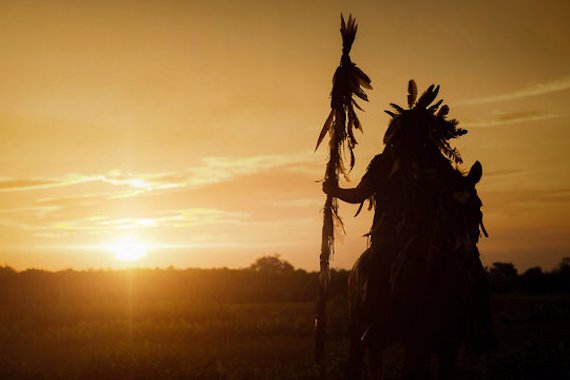
A very curious tale of a supposed encounter was also told of by Mooney in his writings. It had supposedly happened to a local man at the town of Nottely when he was a child, and begins with the boy meeting an old stranger out in the forest, who invited him to his home. The boy agreed and found it to be a jovial, happy place full of warmth and laughter, and he ate dinner with the whole family before falling asleep. When he awoke in the morning the man took him out along a path that would lead him home. Mooney says of the rest of the odd tale:
They went down a path that had a cornfield on one side and a peach orchard fenced in on the other, until they came to another trail, and the man said, “Go along this trail across that ridge and you will come to the river road that will bring you straight to your home, and now I’ll go back to the house.” So the man went back to the house and the boy went on along the trail, but when he had gone a little way he looked back, and there was no cornfield or orchard or fence or house; nothing but trees on the mountain side. He thought it very queer, but somehow he was not frightened, and went on until he came to the river trail in sight of his home. There were a great many people standing about talking, and when they saw him they ran toward him shouting, “Here he is! He is not drowned or killed in the mountains!
They told him they had been hunting him ever since yesterday noon, and asked him where he had been. “A man took me over to his house just across the ridge, and I had a fine dinner and a good time with the children,” said the boy, “I thought Udsi’skalä here”–that was the name of the man he had seen at dinner–“would tell you where I was.” But Udsi’skalä said, “I haven’t seen you. I was out all day in my canoe hunting you. It was one of the Nûñnë’hï that made himself look like me.” Then his mother said, “You say you had dinner there?” “Yes, and I had plenty, too,” said the boy; but his mother answered, “There is no house there–only trees and rocks–but we hear a drum sometimes in the big bald above. The people you saw were the Nûñnë’hï.”
It seems like this must all surely be pure folklore and legend, but there have been some who have suggested that there may be a grain of truth behind these myths. One of these is author and researcher Mary Joyce, who has written of the phenomenon in her book Cherokee Little People Were Real. Joyce claims that she has uncovered evidence that there was indeed a race of tiny humans who could have been behind the tales. Some of this evidence was apparently uncovered by Walter Middleton, who was one of the people behind the construction of the Western Carolina University campus in the 1930s, during which they supposedly made some strange discoveries. Joyce has said of this:
He and a few other men actually worked on the first buildings that were constructed at Western Carolina University, and when they were cutting into the virgin land, they found these little tunnels. They also found a little skull. And, there was a science teacher at the university who kept it on his desk, and he always said it was a child’s skulls. One day, another teacher came by and picked it up and looked at it real close and noticed it had its wisdom teeth. Typically, you don’t get your wisdom teeth until you’re about 18, 19, 20 or 21 so that indicated it was an adult skull, not a child’s skull.
Is there anything to these legends? They say that much folklore is based in some essential grain of truth buried in the past of the people who believe it, so was there really ever perhaps a race of diminutive beings that spurred the stories told amongst the Cherokee? It is unclear whether these rich traditions have any basis in fact at all, but the stories remain, and they make one wonder if there is perhaps more to the history of this land than we have been taught.
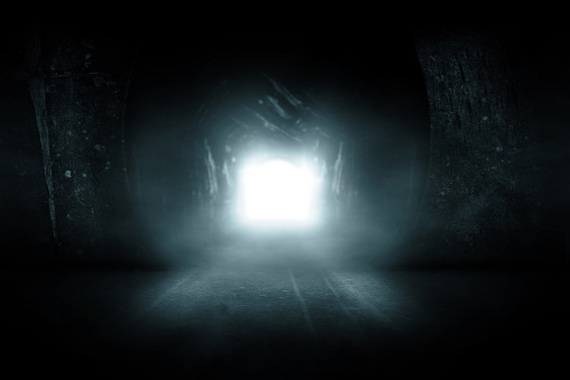
Out in the wilds of the northern U.S. state of Alaska, the native tribes of the region such as the Inuit and Yup’ik have long had their own tales of little people living out in the forests and frigid tundra here. Depending on the tribe or tradition these enigmatic creatures go by many names, such as the Ircinrraqs, Inukin (also often spelled “Enukin” or “Inukun”), Ircenrraat, Ingnakalaurak, Egassuayaq, and the Paalraayak, although they seem to most commonly be collectively referred to as the Inukin, or Enukin, and for the purposes of this article they will be referred to as such.
Prominent in the lore of many of these northern peoples, although there are different details depending on the tribe, the Inukin are most often described as being between 1 to 3 feet in height, typically dressed in animal skins and with pointed heads and elfin ears. The Inukin are mostly said to prefer to stay underground or hidden away in the mountains during the day, only venturing out at night, and are mostly characterized as being mischievous, bad-tempered, and mean, seeming to enjoy tormenting people. It is commonly said that they will intentionally try to get travelers lost or throw rocks at them, and that they have a bad habit of stealing the kills of hunters, with caribou said to be among their favorites, and they are also hunters themselves, using bows and arrows. At their most sinister, the Inukin are thought to abduct women or children and drag them off to never be seen again. They are usually credited with having superhuman strength and a host of supernatural powers such as shapeshifting, invisibility, and the power to sow confusion in the minds of those who see them. One old Inupiaq man named Majik Imaje said of these little people and their strength:
They live in the old ways to this very day they dress in caribou skins. They still hunt with bow & arrow. They live underground, and in caves all throughout this vast area. They possess super human qualities that you will never believe. They are incredibly strong and they can run, very fast; they sneak around the villages stealing food. When any hunter shoots and kills a caribou, it requires two adult Inupiaq men to lift that caribou to place on a sled. It only takes ONE Ingnakalaurak or Enukin to pick one up and RUN WITH IT, over his head. Hunters, experienced hunters, often talk about caribou that they have shot & killed. Dead and the caribou will disappear before they reach it to dress it out. Make no mistake, these people are very good in what they do, they are perhaps the best hunters in the world.
Imaje also claims that this is why some bush pilots have reported seeing the strange sight of caribou running on their sides, only to fly lower and see that they are actually being carried along by an Inukin. These beings are also said to sneak into villages at night when everyone is asleep to steal food and goods, but interestingly, although they are mostly avoided and for all of their more malevolent tendencies, these creatures are also said to have a benevolent side as well. For instance, it is supposedly good luck to receive a gift from them when they are feeling generous, and on occasion instead of playing pranks they will take pity on a lost soul out in the woods and guide the way.
It is interesting how many of the details of the Inukins match the lore of other little people from various other cultures around the world, such as their general appearance and similar habits and powers attributed to them, as well as their curious mixture of both mischievous, prankish behavior and contradictory more benevolent tendencies, which is a common trait in such creatures in a great many other cultures as well. Also, just as with other cultures, although outsiders may see these little people as surely purely mythical constructs, the natives of this region see them as very real indeed, with many insisting that the Inukins actually exist. Supporting these claims are the various real sightings and encounters with such beings, which blur the line between reality and what must seem like fairy tales to many.

Indeed, villagers and hunters of the region have long told of seeing Inukins and having their things stolen by the creatures, and some outsiders have reported seeing such little people out in the wilds as well. Very common are reports of hunters who have shot and killed an animal, only to go to retrieve it and find it gone, without any trail of blood or trace of where it has gone. Also common are stories of having rocks come flying from the woods out of nowhere, followed by a fleeting glimpse of a small, child-sized shadow in the brush. Some of these encounters are rather amazing to say the least, such as one hunter who claimed that he one day heard a strange noise, only to follow it and find a portal in the side of the mountain, through which he could see a group of Inukins dancing. He claimed that he had only watched them for a moment, but that when he got to his sled it seemed to have aged in the elements and his game had rotted away, and when he returned home it turned out that he had been gone for an entire year. It is tale that is said to have really happened, but which seems as if it must surely be colored with some legend.
Others are more based in actual eyewitness accounts. In 1993, the Arctic Sounder published an impressive range of accounts of encounters with the mysterious Inukin, which would later be republished in the Anchorage Daily News. In one of the accounts, a villager from near the Noatak river named Kenneth Ashby recounts a rather ominous experience he had with the creatures while fetching water from the river with his brother in the summer of 1938. As they made their way through the wilderness, Ashby claims that they were jumped and attacked by a group of feral little people about 3 feet in height, with bowl-style haircuts and draped in caribou skins. After a fierce struggle they managed to escape when the creatures were distracted by the arrival of the two young men’s grandfather.
Ashby claims that that very same summer his sister chased off a group of the creatures trying to steal her catch of salmon at the river. Ashby would have another encounter with the Inukins 9 years later, when he was camping at the river with a group of relatives on a hunting trip. He reports that during the night they could hear the crunching of leaves and the Inukins communicating with each other in strange, bird-like whistles, but whenever they went to look for the elusive creatures they would scamper away, as if playing hide and seek. They played this game all the way down the river up to the village, where they were finally chased away back into the wilderness by the local men.
The series of articles also told the account of local woman in the same area named Flora Penn, who claims that she was out with friends traveling up the Noatak and at one point they stopped to pick some berries. As they did so they suddenly noticed a tiny man with a large, bulbous noise, big pointy ears, and a cone shaped head casually sitting upon a driftwood tree smoking a pipe. Penn says they watched the curious little man for a full hour, and the whole time he just smoked his pipe and looked around. Then suddenly, the creature was reportedly either spooked by something or remembered he had something important to do, and he then bolted upright to start running towards the nearby mountains at a frantic pace.

Another witness named Saul Shiedt had an encounter with one of the mysterious little people one summer as he was hunting caribou. After bagging a caribou, he set to work skinning it, and that was when he says he heard the voice of someone speaking in the Eskimo language. When he looked to see who it was, he saw that the voice had come from a diminutive man around 3 feet in height and armed with a bow and arrow. The two had a brief exchange and inspected each other’s respective weapons, with Saul himself armed with a high powered rifle. According to Saul, the Inukin’s bow was too tight for him to pull, and he imagined it must have taken immense strength to make it work. The hunter then told the mysterious stranger that he could take what he wanted from the caribou, and the only thing the Inukin supposedly wanted to take was the fatty part under the knee of the animal. Joining these tales of weirdness is a tale told by a Joe Sun, who said that one day a man had been hunting out in the wilds and had set his sights on a trophy caribou but that there was another hunter who was also pursuing it. He said of the strange sequence of events in the incident thus:
I hear from my parents in the Maniilaq area that there was this man hunting. He had a real rifle. (Not the old kind that you had to load through the barrel with a rod.) He saw a caribou he wanted to get close to, to have a shot at it. He saw another person trying to hunt this caribou too. When this man, a big man, got close to shoot the caribou it changed into a little man. The big man jumped at the little man who escaped and began running and climbing up the mountain.
Perhaps an even stranger story was reported in the May 31 edition of the Anchorage Daily News, and which seems to address the predilection of these Inukin to abduct people. According to the report, a hunter from Marshall, Alaska going by the name Nick Andrew Jr. was out on his snowmobile hunting birds on May 7 and came across a young boy sitting alone out in the middle of a marsh. When he approached the boy he saw that the child seemed to be in some sort of trance or daze, and it was odd that there were no tracks anywhere around him. Asking other snowmobilers in the area didn’t help, because none of them had seen the boy at all. The boy seemed to have just appeared out of nowhere. When Nick asked him what had happened or where his parents were, the boy, who was obviously upset and with a face red and swollen from crying, sputtered out that he didn’t know, and was unable to provide any information at all. The hunter would say, “The boy was disoriented, dazed, confused and scared, with no concept of time. He did not appear tired, nor was he hungry or thirsty.”
The concerned Nick decided to help the boy out and took him back to his village, where things would get even more bizarre. After he had come to his senses and calmed down somewhat, the boy claimed that he had been abducted by the little people and taken to nearby Pilcher Mountain, interesting since this particular mountain is known as a hotspot for Inukin encounters. At the mountain he was held captive, and claims to have seen a little girl also being held there who had vanished in the area 40 years earlier. He says that the Inukin had eventually decided to let him go, and had dumped him into the marsh. The boy displayed classic symptoms of lost time, and was unable to provide any details as to where he had been taken.
The 2013 book Myths and Mysteries of Alaska, by Cherry Lyon Jones, gives some curious accounts as well. One of them concerns what appears to have been a rather helpful Inukin. One day an Inupiaq man named Luke Koonuk was out hunting in the area of Point Hope, Alaska, but was out in incredibly remote, isolated terrain when his 4-wheel drive vehicle became stuck in a patch of muck. He was allegedly unable to budge the vehicle by himself, and with no one around for miles and miles it seemed that he was in quite a bit of trouble. After trying to move the vehicle and get it unstuck to the point of exhaustion, the panicked hunter reported that the truck had suddenly and inexplicably risen up, shifted, and then come bouncing back down out of the mud. As he looked on in bafflement, he claims that he could fleetingly see the blur of a shape of a little bipedal creature of some sort dash off into the trees.
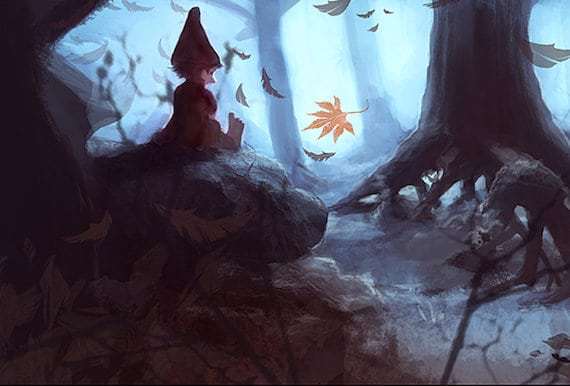
The same book gives another account which is really hard to classify, and could be read as a Inukin encounter or one with aliens, but considering the location seems worth mentioning. The report comes from a group of teenagers in Nome, Alaska in 1988. The boys allegedly were driving along at night when they noticed an odd, pulsing light in their rear view mirror. Curious, they turned their vehicle around and went back to see what was going on, and as they approached they saw a humanoid creature between 3 to 4 feet tall, with broad, muscular shoulders standing there bathed in a greenish light. As the car approached, the creature allegedly ran away, but was quickly overcome by the vehicle and apparently run over. The boys would later find that other people had seen one or more of the same sort of creatures in the area at around the same time, either standing by the side of the road or in some cases even chasing vehicles, and there was apparently much talk at the time that this was perhaps the Inukin.
It is fascinating that such reports can be so similar to those of little people in other areas across the face of our planet, and yet still maintain their own stamp of uniqueness. One little known corner of the phenomenon is a race of little people native to Africa, which was both respected and feared by the native Zulu tribe. The Zulu people were originally a migrating faction of clans coming from a larger group of people called the Nguni, who came to Southern Africa and began integrating together to form a larger cohesive group. When the ruler Shaka brought his improved military tactics and organization to the Zulu they evolved into the Zulu Kingdom, sometimes referred to as the Zulu Empire or the Kingdom of Zululand, which ruled over a vast expanse of Southern Africa that extended along the coast of the Indian Ocean from the Tugela River in the south to the Pongola River in the north. The Zulu were well known for being the strongest military force in southern Africa, notorious for invading new lands, and in the 19th century they became infamous for the Anglo-Zulu War with England, which ended with the colonial British taking control of the entire southern part of Africa. In modern times the Zulu are the largest ethnic group and nation in South Africa, and while their history is mostly known for their battles and fierce warriors, the Zulu culture also had its share of mysterious lore concerning a race of diminutive little people.
The Zulu long carried down stories of a race of miniscule people they called the Abatwa, which were described as looking like men, but measuring under an inch in height, with some tales saying they were so small they could ride ants and hide under a blade of grass. The Abatwa were described as a nomadic people, travelling from place to place in the upcountry in the rocks and often said to sleep in anthills. There was much lore surrounding them, with various supernatural elements, such as that they could only be seen by certain people, and an excerpt from the Encyclopedia of Things that Never Were, by Michael Page & Robert Ingpen describes them as follows:
Abatwa: The tiniest creatures in human form, who live in the anthills of southern Africa. Sightings are rare because the Abatwa are the shyest and most elusive of all creatures in human form. When they do reveal themselves, it is only to children under four years old, wizards, or pregnant women. A woman in the seventh month of pregnancy who sees an Abatwa male knows that she will give birth to a boy. The Abatwa are perfect miniatures of African tribespeople and they maintain a clan and family structure similar to that of the tribes, but they are not a warlike race and they never seek dominance over the ants with which they share their quarters. They live by foraging for food among the roots of grasses and other plants.
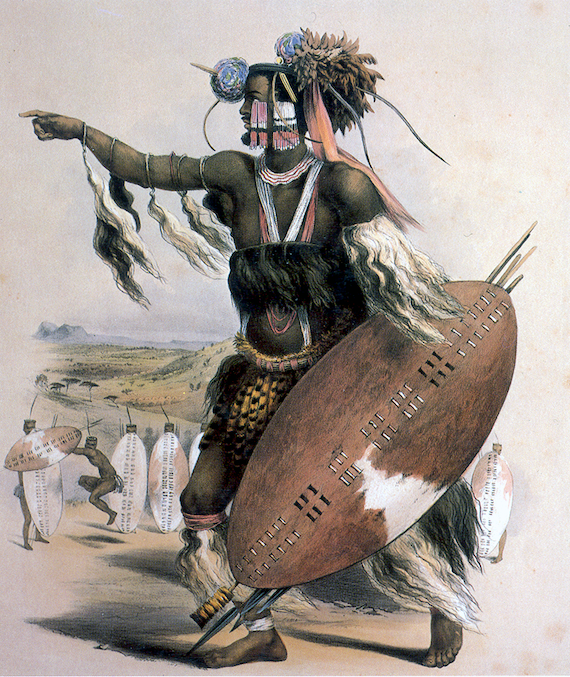
Despite their small size, the Abatwa were said to kill and eat much larger creatures than themselves, using poisoned arrows to take down horses or antelope. It was this fierce nature, the ability to hide, and the tiny poisoned arrows that belied their size that caused the Zulu to fear them, as it was said that even a single one of their arrows could take down a full grown man. The common lore says that the Abatwa were fiercely territorial, and that they did not like being reminded of how small they were. To wander into their territory, remark on their small stature, or worse yet step on one was seen as tantamount to a death sentence, and so the Zulu gave areas that the Abatwa were known to inhabit a wide berth. If one were to encounter one of the Abatwa, they were supposed to tell it “I saw you,” to which the creature would reply “From where?,” and the proper answer was “From that mountain over there.” If one did this, there was a chance you would be spared their wrath, and “I saw you” was often said even if a Zulu wasn’t sure if there were any Abatwa there at all, just to be safe.
The tales of the Abatwa first made themselves known to the outside English speaking Western world in 1868, when Henri Callaway wrote about them in his Nursery Tales, Traditions, and Histories of the Zulus. Although the Zulu believed that the Abatwa were unquestionably real, Callaway believed that the stories perhaps had their origins in a neighboring tribe of pygmy bushmen, who they also called the Abatwa. It was Callaway’s opinion that initial encounters with these bushmen, who reached an average height of only 4 feet, had given birth to the legends of the Abatwa. Rather interestingly, there is another tradition of a race of apparent cannibal dwarves called the Maithoachiana, which hail from East Africa and have a very similar profile. The explorer and writer Mervyn W.H. Beech would hear of these creatures while visiting the region as a correspondent for the journal MAN, and he would write of them:
The Maithoachiana appear to be a variety of earth-gnomes with many of the usual attributes: they are rich, very fierce, very touchy, e.g., if you meet one and ask him who his father is he will spear you; or if he asks you where you caught sight of him first, unless you say that you had seen him from afar, he will kill you, the inference being, I suppose, that you have seen what he was doing, burying treasure, &c. This is only a guess on my part. Like earth-gnomes in most folklore, they are skilled in the art of iron-working. They originally lived round this part (i.e., south of Mount Kenia), but they were driven out by another legendary people called the ‘Gumba,’ who dwelt in caves dug in the earth, and who disappeared one night after teaching the Kikuyu the art of smelting. Another account says that they lived in the earth themselves. It is a Kikuyu insult to say ‘You are the son of a Maithoachiana.’
The fierce little people were said to have displaced an ancient people called the Gumba, and were greatly feared by the local tribes. Although the natives firmly insisted that the Maithoachiana were real, like Callaway Reed thought they were likely a local myth that had originated from early contact with pygmy tribes. Is that what was going on here, or is it something else? It is curious that such similar stories of little people should originate from two entirely different regions, so was there perhaps a race of tiny people living in Africa, even smaller that the pygmies? Or is this all just folklore and myth? The answers are unclear.
Islands also have a long tradition of these mysterious little people. One place that has long has a tradition of curious little forest people is the island nation of Madagascar, which is a majestic land full of spectacular mysteries both known and unknown. Located in the Indian Ocean off the coast of East Africa lies the island nation of Madagascar, or officially the Republic of Madagascar. The main island is the fourth largest island in the world, and broke off from the Indian peninsula approximately 88 million years ago, after which the flora and fauna went on to evolve in complete isolation. It is due to this unique geological history that the island has a wealthy abundance of completely unique species and ecosystems seen nowhere else on Earth, with many more thought to remain undocumented. Considering this remote isolation, the swaths of pristine, uncharted wilderness, such a plethora of unique wildlife, and the strong possibility of lost, unidentified species, it should come as no surprise that Madagascar also has its share of bizarre and elusive mystery monsters.
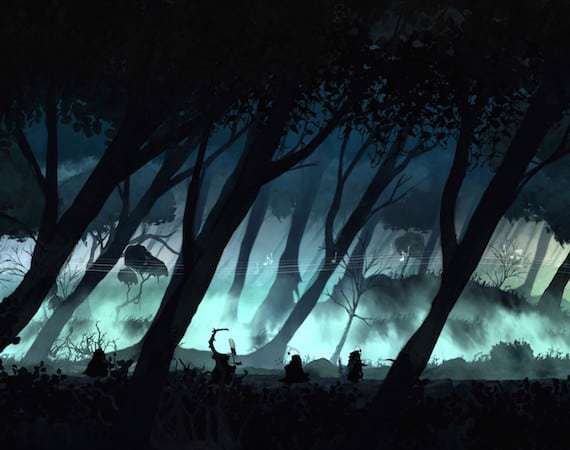
One of the more intriguing of Madagascar’s alleged strange denizens is a creature most commonly known as the Kalanoro, which is said to roam isolated pockets of rain forest and lurk in dark caverns all over the country. Known by a myriad of other names depending on the local tribe, such as the Kotoky or Vazimba, these odd beings are said to stand around 2 feet in height, with somewhat ape-like features and hooked fingers endowed with extremely long fingernails. They are mostly said to be covered in long hair, although it is often said that they also have some sort of quills or spines on their backs, and the eyes are typically said to be formidable and fierce. The creatures are often reported as loving water, and can supposedly be seen cavorting about in rivers or lakes. More unusual details include that they have only three toes that face backwards or that their eyes glow in the dark.
The Kalanoro are said to be for the most part shy and hiding from mankind, but will come forth under the cover of night to steal food from villages and even on occasion abduct children, and they are known to be rather aggressive if encountered. They are most often described as having prodigious strength for their size, and it is usually recommended to avoid them if at all possible, although sightings are remarkably rare. Interestingly, most of the lore and descriptions of the Kalanoro are remarkably consistent amongst the myriad tribes scattered about Madagascar, which prompted the great cryptozoologist Bernard Heuvelmans to once muse, “These legends may be fantastic, but they are found all over Madagascar, and it would be odd if they were utterly without foundation.” Indeed, far from just a completely folkloric legend there have been a few supposed sightings and encounters with the diminutive beasts on occasion. Some interesting early reports were written of in 1886 by a G. Herbert Smith within the pages of the Antananarivo Annual, where he said:
We next come to the forest, and from there we get endless stories of the Kalanoro, a sort of wild-man-of-the-woods, represented as very short of stature, covered with hair, with flowing beard, in the case of the male, and with an amiable weakness for the warmth of a fire. An eye-witness related that once, when spending a night in the heart of the forest, he lay awake watching the fire, which had died down to red embers, when suddenly he became aware of a figure answering to the above description warming himself at the fire, and apparently enjoying it immensely. According to his story, he put a summary end to the gentleman’s enjoyment by stealing down his hand, grasping a stick, and sending a shower of red-hot embers on to his unclothed visitor, who immediately, and most naturally, fled with a shriek. Another tells how, on a similar occasion, the male appeared first, and after inspecting the premises and finding, as well as a fire, some rice left in the pot, summoned his better half; the pair squatted in front of the fire and – touching picture of conjugal affection – proceeded to feed one another! One must confess that the creature described looks suspiciously like one of the larger sorts of lemur; but in a village near Mahanoro, and on the verge of the forest, the inhabitants say that very frequently these wild people come foraging in their houses for remnants of food, and may be heard calling to one another in the street.
One very well-known account is that of a Kalanoro that was allegedly captured in 1889 and then reported to the Royal Geographical Society. It is unknown what happened after this. In later years there was a 1924 sighting made by the American politician, newspaper reporter and explorer Chase Salmon Osborn, who claimed to have seen a pair of the dwarfish creatures engaged in a bout of rather noisy and rough mating. Bizarrely, similar creatures have been reported from other regions of Africa, such as the Congo, where they are called the Kakundakari. It is here where one of the most incredible reports of these hairy little people originates. In 2007 the cryptozoologist Loren Coleman came forward with a rather bizarre report indeed of a Navy SEAL team encountering the creatures in the jungles of the Congo while on patrol. Coleman said that the source was reliable but confidential due to the sensitive nature of their intelligence work, and wrote of the encounter:
What the former SEAL relates is that he was involved in covert operations in the Democratic Republic of the Congo between 1997 and 2002. According to his account, his team observed a group of thirteen “chimpanzee-like” creatures between 4.5 to 5 feet tall, uniformly gray all over their bodies, with rows of seemingly porcupine-like quills running the length of their backs.The unidentified apes walked bipedally and were observed by the SEAL team in the act of killing another animal. When the creatures became excited or agitated, the quills or spines stood erect from their bodies. According to this informant, the US Navy SEAL team took three minutes of video footage of these creatures, but this tape apparently has been classified, due to their mission. This SEAL member still has his mission maps and is able to pinpoint the area of the encounter with this large group of bipedal apes. The involvement of a US Navy SEAL team would indicate that their activity employed water as a means of transportation, and/or they were working in an area involving a lake, river, or swamp. This is all very interesting, but one does wonder what happened after this, and more importantly where that supposed video went. It is worth mentioning that supposed physical evidence of the creatures has been found in the same vicinity as the purported SEAL sighting, such as animal collector Charles Cordier purportedly finding tracks from the beasts there in 1961. It is unclear what relation, if any, these creatures could have had to the Kalanoro of Madagascar but it is a curious anomaly nonetheless.
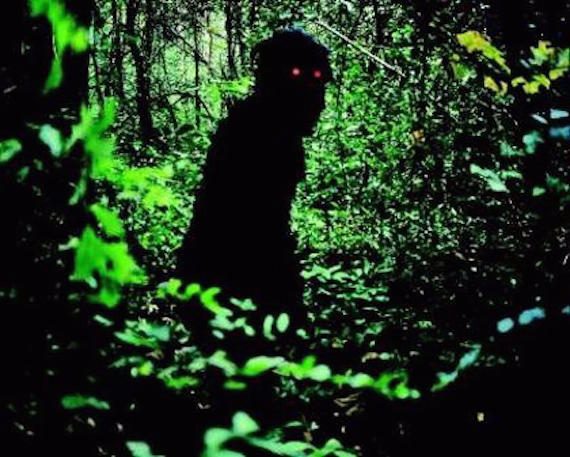
So what are we dealing with here? Is this some sort of unidentified primate? Are they some other type of animal still unclassified by science? Are they nature spirits or some other type of supernatural entity? Or do they exist merely in the realm of folklore, legend, and the human imagination? The only thing we know for sure is that the natives of the regions where these creatures appear see them as very real. Whether they truly are or not remains to be seen, and Madagascar holds one more mystery close.
Within the remote, nearly impenetrable forests of the island of Flores, in eastern Indonesia, live the indigenous Nage people, long the keepers of this land. Like many other native tribes, they have their own rich history and traditions, and also legends. Among these is the tale of a race of strange jungle dwelling creatures these people call the Ebu Gogo, coming from their words ebu, meaning “grandmother,” and gogo, roughly meaning “one who eats anything.” The creatures themselves are said to be a race of slightly built bipedal hairy humanoid beings, and although they are firmly entrenched into the lore of this island people, there is also the possibility that the Ebu Gogo could exist outside of mere myth, perhaps out there roaming the wilderness.
The Ebu Gogo, also known by other regional names such as the Ine Weu and Poti Wolo, are described by the Nage as standing between 4 and 5 feet tall on average, and with decidedly ape-like features, including hair-covered bodies, large mouths, broad, flat noses, and prominent eyebrow ridges, as well as proportionately very long arms and pot bellies. In the lore these creatures are depicted as being very fast and agile runners and climbers, and are said to have the ability to talk amongst themselves in their own rudimentary language, as well as to mimic human speech, although they show no sign of using fire or tools. Far from benevolent denizens of the forest, the Ebu Gogo traditionally have a rather negative image attached to them. They are seen as ravenous gluttons who will eat anything and raid villages to steal food or to even kidnap people to eat, and they are most often said to be of a rather nasty disposition, eager to chase people out of their territory.
Despite this unsavory reputation, the Nage said that they long had an uneasy truce with the Ebu Gogo, occasionally trading with them or even having feasts together, but the creatures supposedly became increasingly bold and devious in their ways. When many village children began to go missing the Ebu Gogo were blamed, and the Nage then apparently went about exterminating them. The most common tale of this has it that in the 18th century the Nage tricked the Ebu Gogo into accepting a gift of clothing fashioned from highly flammable palm fiber, which the greedy creatures eagerly took into the caves they inhabited. When this was done the villagers threw torches in after them, which ignited the fibers to create a great fire that wiped out almost all of the Ebu Gogo, with the few survivors hunted down and killed. However, there have always been those stories that a few of them managed to survive and eke out an existence in the deepest jungles of the island to this day.
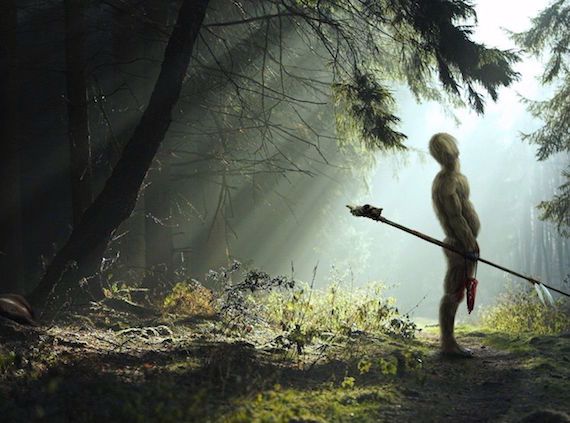
The Ebu Gogo were apparently sighted often during the 19th century by both natives and foreign explorers and settlers alike, but after this modern sighting drop off dramatically, although the occasional story will pop up. Perhaps one of the most recent of these is the story that according to a Chief Epiradus Dhoi Lewa of Boawae, a female specimen was actually captured in a village in 2004, with the main feature being that she had extremely pendulous breasts that could be draped over her shoulders, a common detail for female Ebu Gogo. Unfortunately, this mysterious woman escaped and fled back into the forest, so there is no way of knowing who or what she was.
Although the Ebu Gogo seems purely mythical, the stories and sightings received a bit of an air of credibility in 2003, when the remains of a new species of diminutive hominin was discovered at the Liang Bua cave of Flores island. The species, called Homo floresiensis, is marked by their very small bodies, standing only 3 to 4 feet high, earning them the nickname “Hobbits.” These creatures have long been believed to have lived on the island up to as recently as 12,000 to 13,000 years ago, meaning they could have not only lived alongside Homo sapiens, but might have even survived to the present day on the island. Considering the size of H. floresiensis and the similarity in appearance to the Ebu Gogo of myth, it has been suggested that they are perhaps even one and the same, with the Ebu Gogo some remnant population of the Flores Hobbits.
Indeed, the existence of H. floresiensis, which may have spread out to other islands, has been used as a possible explanation for other hairy hominid cryptids in the region, such as the Orang Pendek of the mountains of Sumatra or the lesser known Orang Kardil, which are said to be miniature wild people who can use rudimentary tools and weapons such as spears. However, there are a few problems with the idea of H. floresiensis being behind the reports and mythology of the Ebu Gogo. One is that recent research carried out in 2016 has perhaps pushed away the known extinction date of H. floresiensis back from 13,000 years to more like 50,000 years, making it seem dramatically less likely they would have survived to the present without being discovered. There is also the detail that although the appearances and geographical region match, the Flores Hobbits are known to have used fire and tools, something the Ebu Gogo are not known for at all. Yet, whether the Ebu Gogo were H. floriensis or not, they seem like they might very well have been based at least in part on some real animal, based in some grain of truth, and Gregory Forth, Professor of Anthropology at the University of Alberta, Canada, has said of this:
However much ebu gogo might recall Homo floresiensis (or vice versa), it is therefore clear that the first figure equally resembles characters that are generally considered to belong to myth and fantasy. (Another fantastic attribute of ebu gogo is their reputed proclivity to swallow things whole, including rice mortars, puppy dogs and piglets.) … Certainly there are problems in interpreting ebu gogo as directly reflecting local memories of Homo floresiensis. Yet whatever the derivation of the Nage representation, ebu gogo really do seem different from the various categories of spirits that Nage describe with equal credulity — and to that extent, I believe the possibility [that they represent a real animal] should be taken seriously. As noted, Nage themselves distinguish ebu gogo from “spirits” (a general category contextually designated as nitu) and they do so explicitly with reference to the hairy creature’s lack of extraordinary powers — for example, the ability to disappear, change shape, transform into animals, and so on.
So what is or was the Ebu Gogo? Are we looking at some sort of undiscovered primate, a lost tribe, or a remnant population of the supposedly extinct Homo Floresiensis? Is it a cultural memory passed down for generations from another time when their people lived alongside these creatures or something else? Or is this all just pure myth and folklore? If so, how is it that it has managed to penetrate into reports from even settlers and outsiders who would know nothing of this lore? Is there any connection between the Ebu Gogo and other island hairy hominids such as the Orang Pendek? We are far from finding the answers to any of these questions, and for now the little hairy people of the jungles of Flores remain a mystery.
On the island of Hokkaido, in the cold northern reaches of the Japanese archipelago, the indigenous Ainu people too have their long traditions of an ancient race of dwarf-like people thought to have inhabited the land since long before humans arrived. The Ainu knew these creatures as the Koropokkuru, also often variously written in other ways such as Kor-pok-un-kur, Koro-pok-guru, and Koro Pokunguru. They are also sometimes referred to as the Tsuchigumo. The name Koropokkuru is most commonly translated as “the people who live under the burdock leaves,” and implies the diminutive size of the creatures. In some stories a whole family was said to be able to fit underneath one burdock leaf, with one such leaf measuring about 4 feet across. The size reported for the Koropokkuru, however, actually varies from tradition to tradition, and they were said to be anywhere from 2 or 3 feet in height all the way down to only mere inches in height.
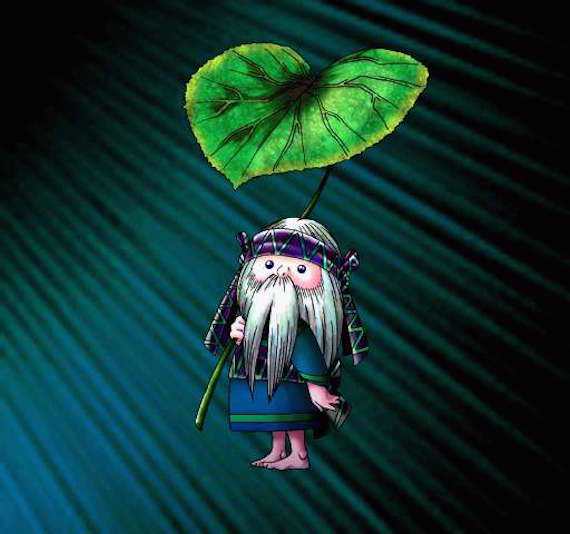
In addition to their small stature, the Koropokkuru were said to be rather rough and primitive looking, with large heads, prominent brows, and short, squashed noses. They were sometimes said to have reddish skinned faces, and most commonly the Koropokkuru were described as being rather hairy and odiferous. The non-Ainu Japanese of the time, and even early western explorers, already regarded the indigenous Ainu people as hairy brutes, and those who were acquainted with the Koropokkuru as well described these creatures as even more so. Despite this brutish, almost beastly appearance, the Koropokkuru had some signs of sophistication and civilization. They were said to use flint or stone knives, scrapers, and other simple tools and implements, and were also known for their ability in the art of pottery, which the Aiunu were not known to practice. Also unlike the Ainu, the Korropokkuru were said to dwell in pit dwellings, basically simple huts built over round holes in the earth, and this led them to sometimes be referred to as “the pit dwellers.” The Koropokkuru were also known to be capable of speech, and were able to communicate with the Ainu in this manner.
According to Ainu lore, this dwarf race was exceedingly shy and did not like to be seen, most often lurking in the periphery and hiding in the woods. Nevertheless, they were known to trade with the Ainu on occasion, although such transactions were brief and typically done under the cover of night, such was their wariness. For the most part, the elusive Koropokkuru were only fleetingly seen, and kept their distance from Ainu affairs unless absolutely necessary. The Koropokkuru and Ainu were said to have peacefully shared the land like this until a war broke out between them and the Koropokkuru were subsequently wiped out or driven away. After this disappearance and with the ever greater presence of mankind in Hokkaido, this mysterious race of ancient little people seemed to have vanished forever into the mists of time. Was there any truth to any of these stories of small, humanoid creatures living in the wilds of Hokkaido, and if so what were they and where did they go? If there was indeed some sort of Stone Age race of half sized, tool using, pit dwelling humanoids in Japan, what were they and where did they come from? Indeed, why should such stories be so prevalent throughout farflung cultures? Many cultures around the world have long reported the existence of half-sized, hairy hominids lurking in the wilds.
These undersize hominids are known to many cryptozoologists as “Proto-Pygmies,” a term coined by the cryptozoologist IvanT. Sanderson, originally as “proto-pygmies.” Proto-Pygmies are typically described as being bipedal and very human-like, only covered with hair, which is sometimes of differing lengths, and possessing rough, primitive features such as prominent brows and short, thick noses. The possible existence of such seemingly fantastical creatures got a shot in the arm with the discovery of remains of a race of miniature hominids found on Flores Island in theIndonesian archipelago. The skeletal remains and other artifacts were found in the Liang Bau Cave, on the Indonesian island of Flores, in 2003, and were first officially described in 2004. The creatures came to be known as Homofloresiensis, and are sometimes referred to as the “Hobbits of Flores.” Research done on the relatively complete remains of a female specimen referred to asLB1, or the “Little Lady of Flores,” has shown that this full grown adult stood at a height of just 106cm (3 ft 11inches). It has also been established that these creatures were not merely dwarfed regular humans, but rather representatives of a completely new species of diminutive hominins. Perhapsjust as surprising as the existence of these creatures is that specimens found thus far have been dated as being 90,000 to 18,000 years old, which makes them contemporaneous with modern humans. It is thought that these “Hobbits” may have existed as little as 12,000 years ago, and maybe even beyond. These creatures also seem to have had a high level of intelligence and relatively sophisticated technology. Among the skeletal remains of Homo floresiensis found in the cave, there were stone tools, including advanced types such as flaked points and evidence of fire use, marking them as being probably at least as intelligent as the humans of the time. Having such a wonderfully unique creature living contemporary to humans is exciting enough, but it also has far reaching implications for the various accounts of little hairy humanoids reported in modern times.
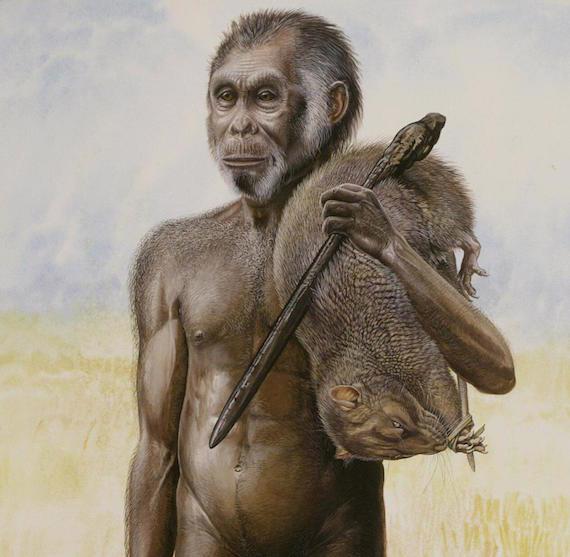
If something like Homo floresiensis has managed to survive into the present day, it gives us a realistic basis upon which to base accounts of similar creatures throughout the region and indeed the world. Hawaii has its Menehune, 2 to 3 foot tall hominids with stout, muscular bodies, low foreheads, and reddish faces. Interestingly the Koropokkuru similarly are described as having red faces. Ceylon has a type of 3 foot tall hairy hominid known as the Nittaewo. Fiji too has stories of tiny, 2 foot tall hairy dwarves. On the island of Palau, remains were found of an “insular dwarf” that dated to a mere 900 – 2,800 years ago. The northern mountains of Queensland, Australia have long been thought to be the haunt of a race of miniature hairy humanoids known as the Junjdy. These beings were said to be half the size of the native Aborigines. Is it possible that Homo floresiensis, or their ancestors, possibly Homo erectus, spread out throughout Oceania and evolved in isolation into the many kinds of Proto-Pygmies reported today from these far flung places? If so, could such creatures not have made it to other parts of the world as well, including the places we have looked at here?
Certainly if these creatures did cross sea barriers and manage to inhabit a place as far from Indonesia as Hawaii, the idea that they could have reached multiple places should not be too entirely far-fetched. Why do so many cultures throughout the world have traditions and myths of such creatures and why do they so often offer so much resemblance? Are these just some immutable feature upon the landscape of our psyche, or is there something more to all of this? What are these people seeing, if anything? Although such stories of gnomes and trolls may seem to many like something out of a fairy tale, to these people they are most certainly real. Why should that be? Are we, in our technologically advanced civilization with all of our science and shiny toys perhaps missing something? Whatever one may think about such reports, they continue to come in from all over the globe, and they hint at something very odd indeed, and whether this lies behind the mystery of these far-reaching stories or not remains a mystery.

